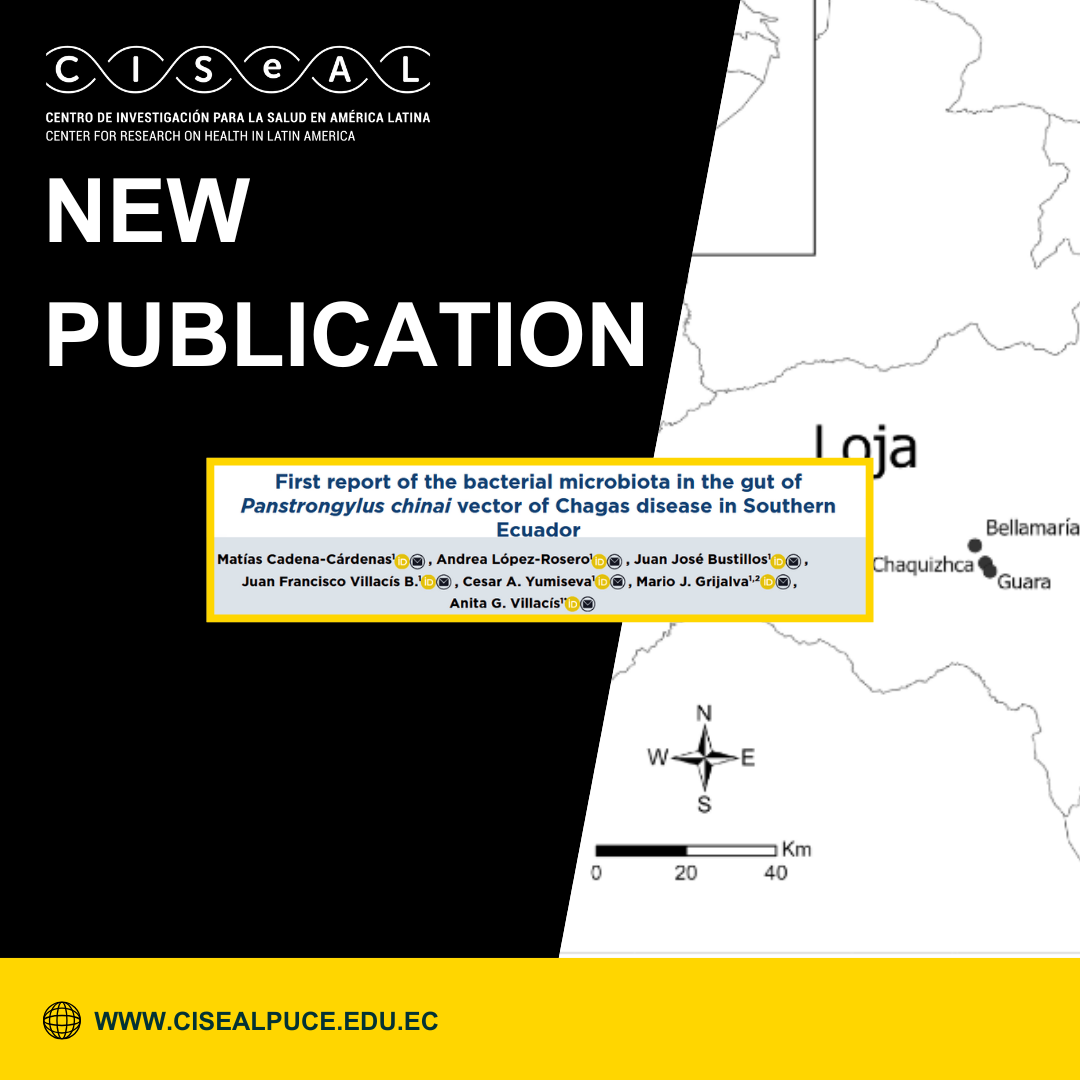 The study represents the first report on the intestinal bacterial microbiota of Panstrongylus chinai, a secondary vector of Chagas disease in southern Ecuador. This research was conducted by the CISeAL team under the direction of Dr. Anita Villacís, with the objective of characterizing the microbial diversity present in the gut of this species and exploring its possible relationship with the transmission of Trypanosoma cruzi.
The study represents the first report on the intestinal bacterial microbiota of Panstrongylus chinai, a secondary vector of Chagas disease in southern Ecuador. This research was conducted by the CISeAL team under the direction of Dr. Anita Villacís, with the objective of characterizing the microbial diversity present in the gut of this species and exploring its possible relationship with the transmission of Trypanosoma cruzi.
Samples were collected from three rural communities in the Calvas canton, Loja province (Guara, Chaquizhca, and Bellamaría), in both domestic and peridomestic environments. The insects were subsequently processed and analyzed using molecular techniques at CISeAL (PUCE) to identify the presence of T. cruzi as well as the composition of the intestinal bacterial community through amplification and sequencing of the 16S rRNA gene.
The results revealed a low infestation rate (7.9%) in the domestic units evaluated and a low natural infection rate with T. cruzi (8.3%). However, bacteria belonging to the genus Staphylococcus were found to be the most frequent, with Staphylococcus saprophyticus (75%) and Staphylococcus equorum (25%) being the predominant species. These bacteria were detected both in field specimens and in laboratory colonies, suggesting a persistent association with P. chinai.
The predominance of the genus Staphylococcus in the intestinal microbiota of P. chinai suggests a possible symbiotic role in the insect’s physiology, survival, and reproduction. This finding underscores the importance of further investigating the interactions between the microbiota and the parasite to explore new biological control strategies for Chagas disease. Potential alternatives include paratransgenesis, microbiota manipulation through probiotics, and the identification of microbial biomarkers for vector population monitoring.
Despite limitations such as the small sample size and the use of Sanger sequencing, this study provides valuable and pioneering information on the intestinal bacterial composition of Panstrongylus chinai in Ecuador. Its results constitute an essential scientific foundation for the development of innovative and sustainable vector control strategies for Chagas disease in the Andean region of the country.
Would you like to learn more about this research? You can read the full article at the following link:
https://remcb-puce.edu.ec/index.php/remcb/article/view/1041/736



